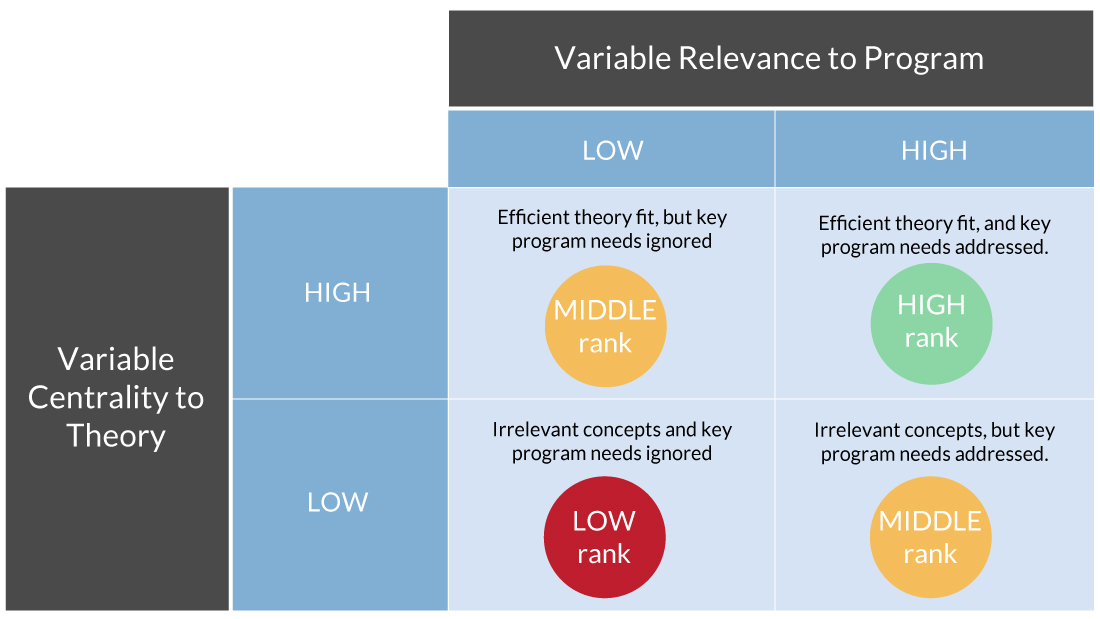Ranking Scheme
The alpha version of TheoryPicker calculates and sorts scores for each of 6 theories. See a conceptual version of the sorting algorithm below.

Theory score calculation:
- A user of the tool answers 18 non-technical questions about a particular behavior change objective. Responses are coded 1-3. They indicate the relevance of each of 18 variable categories to the user’s behavior of interest.
- Centrality of a variable category to a theory was determined three times to reflect theory evolution, producing 3 variable category x theory matrices . They allow the user to select one of three modes for ranking the theories. Original mode assigns the value 3 to a theory’s original constructs and 1 to all others; Interim mode assigns 3 to original constructs, 2 to subsequently added constructs, and 1 to the others; and Current mode assigns 3 to every construct in a recent version of a theory. The point of reference was Theory at a Glance, 2nd ed., or Glanz et al., (2008).1
- Relevance and centrality ratings from steps A & B are summed for each construct, and the construct sums are summed within each theory.
- Each theory-wise sum is divided by the number of variables in the theory to remove bias introduced when a theory has a relatively large number of constructs.
- Quotients generated in step D are sorted from highest to lowest numerical value. Then:
- If acquiring skill was rated as irrelevant to the behavior in step B, SCT is ranked last. This is done because building skills can demand substantial program resources.
- If a behavior must be performed only once, TTM is moved to last place because it includes stages in which behaviors are maintained over time.
- Ties are allowed and labeled as such.
Results
Results are being validated against findings of published research that compared the relative effectiveness of two or more of the theories empirically.5